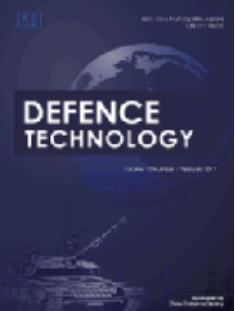Enhancing bonding reliability of solid propellant grain based on FFTA and PSO-GRNN
IF 5.9
Q1 ENGINEERING, MULTIDISCIPLINARY
引用次数: 0
Abstract
Bonding quality at the interface of solid propellant grains is crucial for the reliability and safety of solid rocket motors. Although bonding reliability is influenced by numerous factors, the lack of quantitative characterization of interface debonding mechanisms and the challenge of identifying key factors have made precise control of process variables difficult, resulting in unpredictable failure risks. This paper presents an improved fuzzy failure probability evaluation method that combines fuzzy fault tree analysis with expert knowledge, transforming process data into fuzzy failure probability to accurately assess debonding probabilities. The predictive model is constructed through a general regression neural network and optimized using the particle swarm optimization algorithm. Sensitivity analysis is conducted to identify key decision variables, including normal force, grain rotation speed, and adhesive weight, which are verified experimentally. Compared with classical models, the maximum error margin of the constructed reliability prediction model is only 0.02%, and it has high stability. The experimental results indicate that the main factors affecting debonding are processing roughness and coating uniformity. Controlling the key decision variable as the median resulted in a maximum increase of 200.7% in bonding strength. The feasibility of the improved method has been verified, confirming that identifying key decision variables has the ability to improve bonding reliability. The proposed method simplifies the evaluation of propellant interface bonding reliability under complex conditions by quantifying the relationship between process parameters and failure risk, enabling targeted management of key decision variables.
基于FFTA和PSO-GRNN的固体推进剂颗粒键合可靠性提高
固体推进剂颗粒界面的粘结质量对固体火箭发动机的可靠性和安全性至关重要。虽然粘接可靠性受到许多因素的影响,但由于缺乏对界面脱粘机理的定量表征,以及确定关键因素的挑战,使得对工艺变量的精确控制变得困难,从而导致不可预测的失效风险。本文提出了一种改进的模糊故障概率评估方法,将模糊故障树分析与专家知识相结合,将过程数据转化为模糊故障概率,以准确评估脱粘概率。通过广义回归神经网络构建预测模型,并采用粒子群优化算法进行优化。通过灵敏度分析,确定了法向力、颗粒转速、黏着量等关键决策变量,并进行了实验验证。与经典模型相比,所构建的可靠性预测模型的最大误差仅为0.02%,具有较高的稳定性。实验结果表明,影响剥离的主要因素是加工粗糙度和涂层均匀性。控制关键决策变量为中位数,最大可提高200.7%的结合强度。验证了改进方法的可行性,证实了识别关键决策变量具有提高粘接可靠性的能力。该方法通过量化工艺参数与失效风险之间的关系,简化了复杂条件下推进剂界面结合可靠性的评估,实现了关键决策变量的针对性管理。
本文章由计算机程序翻译,如有差异,请以英文原文为准。
求助全文
约1分钟内获得全文
求助全文
来源期刊

Defence Technology(防务技术)
Mechanical Engineering, Control and Systems Engineering, Industrial and Manufacturing Engineering
CiteScore
8.70
自引率
0.00%
发文量
728
审稿时长
25 days
期刊介绍:
Defence Technology, a peer reviewed journal, is published monthly and aims to become the best international academic exchange platform for the research related to defence technology. It publishes original research papers having direct bearing on defence, with a balanced coverage on analytical, experimental, numerical simulation and applied investigations. It covers various disciplines of science, technology and engineering.
 求助内容:
求助内容: 应助结果提醒方式:
应助结果提醒方式:


